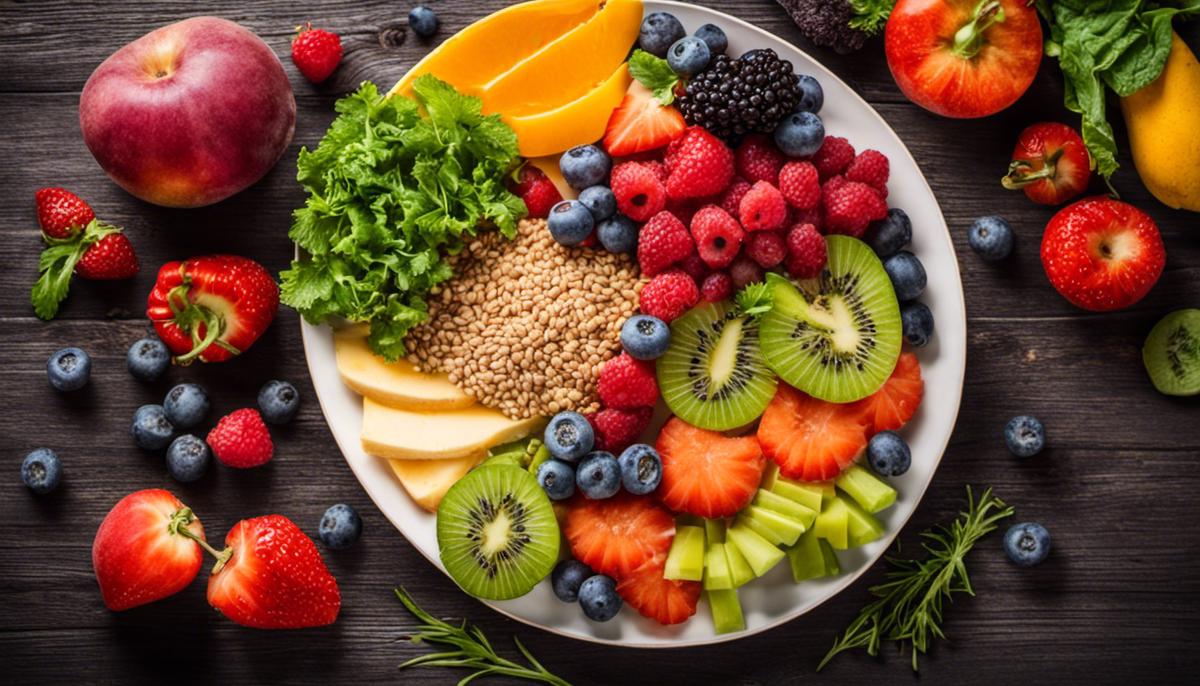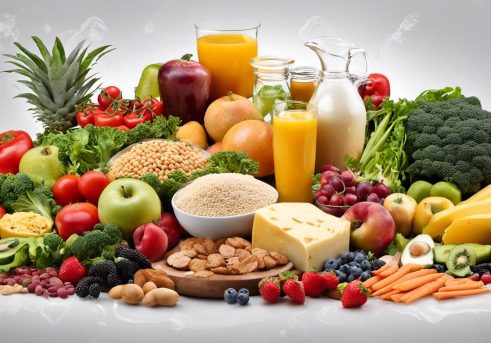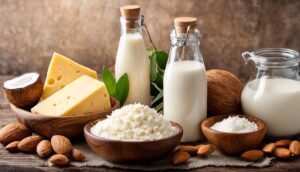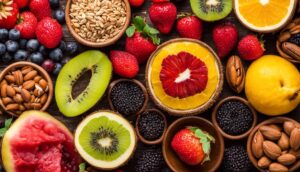The journey towards weight loss isn’t only about hitting the gym or embarking on rigorous workout routines. It is equally about the dietary choices we make and our cooking methods. An appropriate understanding of our nutritional needs can go a long way in facilitating significant weight loss while maintaining optimal health. Various nutrients including proteins, carbohydrates, fats, vitamins, and minerals perform indispensable roles in our body. However, it is equally important to ingest them in the right proportions. Furthermore, low-calorie cooking techniques, such as steaming, baking, grilling, and sautéing, are needed to prepare delectable and satisfying meals without compromising on their calorie content. The strategic planning of meals also contributes to maintaining consistent eating times, controlling portion sizes, and averting unhealthy food choices.
Understanding Nutritional Needs
Savvy Dining: Essential Nutrients for a Wholesome, Weight-Loss Diet
Indulging in the art of cuisine isn’t just about succumbing entirely to the delights of decadent dishes. Beyond flavonoids and zest, the noble pursuit of gastronomy involves a deeper understanding of how various nutrients interact with our health and well-being. This enlightenment is particularly significant when sculpting a diet for weight loss without relinquishing the joy of a well-prepared, flavorsome meal.
First up, the unsung heroes of any weight-loss diet: Proteins. Among the essential nutrients, proteins are the building blocks required for cellular repair and regeneration. More importantly, in the context of weight loss, proteins boast a high satiety index, meaning they help control hunger pangs, curbing overeating and unhealthy snacking. So, if you’re carving out a weight-loss diet plan, don’t forget to incorporate lean protein sources like chicken, fish, or plant-based options like lentils and quinoa for the vegetarians among us.
Next comes fiber: the star player for weight management. Comprising a significant proportion of plant-based foods, dietary fiber benefits lie in its ability to slow digestion, bolster satiety levels and aid in maintaining stable blood sugar. Excellent sources include fruits, vegetables, whole grains, and legumes. Not only do they help keep the pounds off, but they color our plates with a vibrant palette, nurturing our culinary creativity.
Carbohydrates, despite their cruelly tarnished reputation, are vital players in a balanced weight-loss diet. Opting for complex carbohydrates like brown rice, millet, and sweet potatoes over simple, refined versions can keep you energized whilst encouraging weight loss. Remember, the preference is for slow-release, low-glycemic index kinds – they will keep you full longer and control sugar cravings.
Essential fats, undoubtedly, are met with raised eyebrows when we talk of weight loss. But let’s clear the air – fats are essential for multiple bodily functions, including vitamin absorption and hormone synthesis. The trick is choosing heart-healthy unsaturated fats like those found in avocados, nuts, seeds, and fatty fish over harmful trans fats.
Minerals and vitamins don’t directly aid in weight loss but contribute significantly to overall well-being and efficient bodily functions – necessary requisites for sustainable weight management. Plenty of fruits, vegetables, lean proteins, and dairy products should keep these bases covered.
Staying hydrated is paramount. Water serves not just as a delivery system for nutrients, but also assists in maintaining satiety levels and aiding digestion, both crucial for weight loss.
Healthy eating for weight loss doesn’t necessitate culinary monotony. Play around with herbs, spices, and flavorsome low-calorie condiments to craft delicious, balanced meals that you will look forward to. Remember, a good weight-loss diet is not a sprint but a leisurely gastronomical journey. So, listen to your body, balance your plate, and most importantly, continue to enjoy what you eat.

Learning Low-Calorie Cooking Techniques
Sculpting Flavors: Low-Calorie Techniques That Keep the Taste Alive
Are you dreaming about dishes that satisfy your taste buds without pushing the calorie count? Let’s jump into how we can make this dream a reality. Scrutinizing the cooking methods we employ in our daily culinary routines is just as instrumental as the nourishing ingredients we mentioned before. Proactively rethinking our cooking techniques can polish off excess calories while retaining taste.
Steaming, potentially one of the underrated techniques, springs to mind first. Consummately preserving the fibrous texture and color of vegetables, steaming keeps the inherent nutrients intact, sidestepping the addition of oil. It also works wonders with fish, leading to a moist, flaky result without sacrificing flavor. The catch? Infuse the steaming liquid with herbs or spices to deeply penetrate the food with aromatic flavors.
Grilling isn’t solely for summertime fun. Using this method year-round serves dual purposes: it caramelizes the exterior of the food, locking in the flavorful juices and dramatically reducing the necessity of additional fats. Plus, the heat creates a sensational char that elevates the dish’s depth of taste.
Next up is roasting. Giving the food adequate space to breathe in a hot oven promotes crisp edges, a gratifying golden crust, and deliciously tender centers. Pack on the flavor by utilizing a variety of aromatic herbs, spices, and citrus zest. Don’t be afraid to experiment with a medley of flavors – roasting allows their individual nuances to shine while harmonizing into a luscious culinary symphony.
To carry the rich flavors of fried food into the low-calorie arena, consider utilizing an air fryer. This state-of-the-art device mimics the crispy texture of fried food using minimal or no oil, hence significantly reducing the calorie count. It’s a win-win solution for every food enthusiast!
Lastly, let’s talk about poaching. Delicate and moisture-ridden, this method slowly simmers the food in a nutrient-rich mixture, intensifying the flavors without any additional calories. Normally reserved for eggs, poaching works exceedingly well with fish, chicken, and even fruit.
As passionate food lovers, we can’t stress enough the importance of being adventurous in the kitchen while keeping health in the centerfold. Through these innovative low-calorie cooking methods, the power to sculpt flavorful, health-centric meals lies in your hands. Discovering dishes free from excess calories but brimming with taste is not only gratifying but a cornerstone in celebrating food as a magnificent, unifying force. Bon Appétit!

Meal Planning for Weight Loss
The Chef’s Secret Sauce: Meal Planning for Weight Loss
Meal planning, a phrase tossed around quite often in the culinary world, boasts not only a host of time-saving benefits but also has the incredible potential of aiding in weight loss. Surprised? Let’s dive into the juicy details and unravel the mysteries of this powerful tool used by gourmets and health enthusiasts alike.
Beyond just what you eat, how you eat can play a crucial role in achieving your weight loss goals. Remember, like a seasoned chef, being strategic about your food choices can lead you towards that desired gastronomic harmony of taste and health.
Portion control is an intricate dance between just enough and too much. When we’re hungry, we tend to eat more than necessary, leading to overindulgence. By prepping meals in advance, you are consciously deciding on appropriate portion sizes that align with your diet goals.
Let’s make a toast to ‘meal prep Sundays’ where you whip up your favorite recipes, diligently portion them out, and revel in the accomplishment of having ready-made meals waiting to sate your hunger throughout the week. The cyclical journey of exploring recipes, grocery shopping, cooking, and packaging can be therapeutic and incredibly satisfying.
Mastering the art of mindful eating can also be a powerful tool in your culinary arsenal. It’s the practice of savoring every bite, being fully present in the joy of eating, and acknowledging how food nourishes your body. Meal planning aids in this practice, as you become more aware of what, when, and how much you’re eating.
One common hurdle to weight loss is the scarcity of time. With life’s perpetual hustle and bustle, fast food and unhealthy snacking can become an unfortunate norm. Meal planning can be a seamless solution to this predicament. Having a pre-prepared, wholesome meal at your disposal eliminates the temptation of unhealthy convenience foods.
One of the many jewels of meal planning is its ability to foster variety. Adopt the philosophy of a world-traveling foodie and voraciously venture into trying new foods within your planned meals. Variety not only keeps your taste buds intrigued but diversifies your nutrient intake and can help curb overeating.
Inevitably, there will be days when cravings take center stage. But here’s the ace up your sleeve: preparation is key. A well-planned meal schedule can help integrate occasional indulgences in a healthy way. Remember, you’re not aiming for perfection but progress.
In all its forms, cooking methods can also play a part in a meal planning strategy for weight loss. The golden rule is to opt for cooking techniques like steaming, grilling, roasting, air frying, or poaching that require minimal or healthier oils. This not only retains nutrients better, but it also reduces calorie intake.
So there you have it! Meal planning, beyond its culinary charm, can be an engaging strategy to aid weight loss. Celebrate the union of culinary art and health, and tune into the rhythm where flavor meets well-being. As a final note, always remember that enjoyment in eating is just as important as the nutrients that fill your plate. Happy cooking and even happier eating!

Lastly, it is crucial to understand that weight loss isn’t simply a short-term goal to be achieved; it is a long-term commitment to healthy living. It transcends mere looks and aesthetics; it involves a strategic lifestyle modification that ensures we live longer, healthier and happier lives. This commitment includes careful meal planning to provide a balanced diet, practicing low-calorie cooking techniques, and consuming the right amount of proteins, carbohydrates, fats, vitamins, and minerals required by our bodies. Therefore, always remember that weight loss does not equate malnutrition or deprivation—it simply implies that you have adopted healthier food and cooking options that not only benefit your physical appearance but also contribute to your overall well-being.





